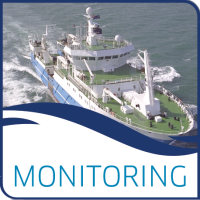The National Electrofishing Programme for Scotland (NEPS) provides a national scale statistical survey of Scotland’s salmon rivers (Jackson et al., 2025). The foundation of the programme is a statistical survey design that ensures collection of unbiased, spatially representative data on the abundance of freshwater fish and the pressures that affect them, including water quality and genetic introgression from farm escapes. Comparisons to target benchmark densities for fry and parr lifestages for salmon (Malcolm et al., 2019a) and trout (Malcolm et al., in prep), allow an assessment of overall status / health.
In the absence of a national programme, the NEPS survey can still support important regional data collection initiatives (within Strata) by providing site locations generated from the larger statistical survey. This allows data to be brought together and analysed together at larger scales as required and as resources allow. However, it also allows local managers to monitor and assess salmonids within their region using robust methods developed over the last decade, strengthening confidence in both the data collected and the assessments that are undertaken. When combined with information on strata framesizes (i.e. the length of rivers in the sample frame) and benchmarks (expected mean densities) this potentially allows users to run GRTS analyses using the spsurvey R package (Dumelle et al., 2023). This DOI dataset package thus provides 3 datasets from the NEPS 2023 survey design. The NEPS 2023 survey (see Jackson et al., 2025 for details) is the latest available NEPS survey, pending changes to allow the collection of data from the Northern Isles. The package consists of:
- NEPS 2023 survey sites list including the survey weights, which are required to correctly analyse the data at regional scales (summary statistics should not be generated from site-wise density estimates without accounting for the survey weights). This is the NEPS 2023 site list following the full national NEPS sampling programme in 2023. See notes section below for information on use of the sites list.
- Benchmark densities for each strata (i.e. mean densities expected for the sample frame within a strata)
- Frame lengths for each strata (this is required to correct / adjust sample weights)
Important notes on sites list use
• The site list is ordered by strata and site name.
• Sites which were replaced by oversamples in the first year of the survey (2023) have been removed from the sample list.
• The panel column currently assumes a 9-year rotating panel design with annual sites, 3-year and 9-year panel rotation. For example, in a region with 30 sites the coding is as follows; 10 annual sites (to be fished each year), 10 3-year sites (panel 3.1, first year of the 3-year rotating panel) and 10 9-year sites (panel 9.1, first year of the 9-year rotating panel). This design was chosen to balance trend detection and spatial coverage consistent with the objectives of NEPS. However, the survey could be used in other ways e.g. the same sites could be fished each year to improve trend detection. Such considerations would need to be addressed in subsequent analysis.
• The number of sites that are sampled in a given year is resource dependent and may also reflect choices around panel rotations. However, it is critical that sites are sampled sequentially down the sites list to maintain the integrity of the survey. Sites cannot be “chosen” within a survey.
• Where local managers make use of the NEPS survey design it is important that meta-data are retained to document any panel rotations and over sample requirements (and reasons). This information may be important for future data analysis depending on objectives.
• Site weights should be adjusted prior to analysis (see spsurvey documentation).
Data and Resources
- NEPS 2023 Surveycsv
Users should refer to Jackson et al. (2025) for full details of the NEPS...
Preview Download - Strata Reporting Benchmarkscsv
Salmon (Malcolm et al., 2019a) and trout benchmark densities (Malcolm et al...
Preview Download - NEPS 2023 Strata Framesizescsv
Sample frame sizes (river length in metres) for each stratum in the NEPS...
Preview Download
| Field | Value |
|---|---|
| Publisher | |
| Modified | 2025-07-01 |
| Release Date | 2025-07-01 |
| Identifier | a89e02e8-7f7f-444f-9302-5630869e91c5 |
| License | UK Open Government Licence (OGL) |
| Public Access Level | Public |


